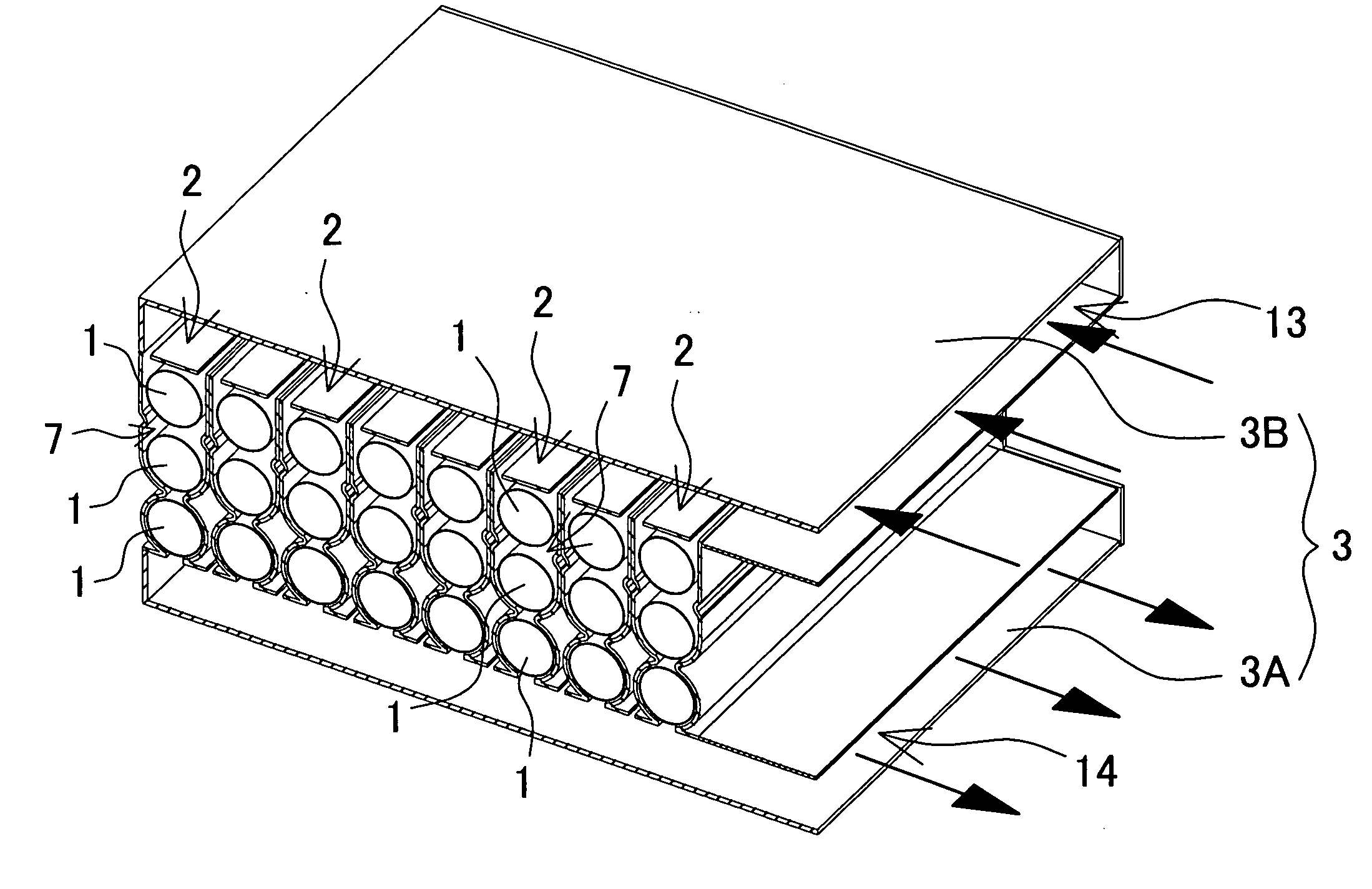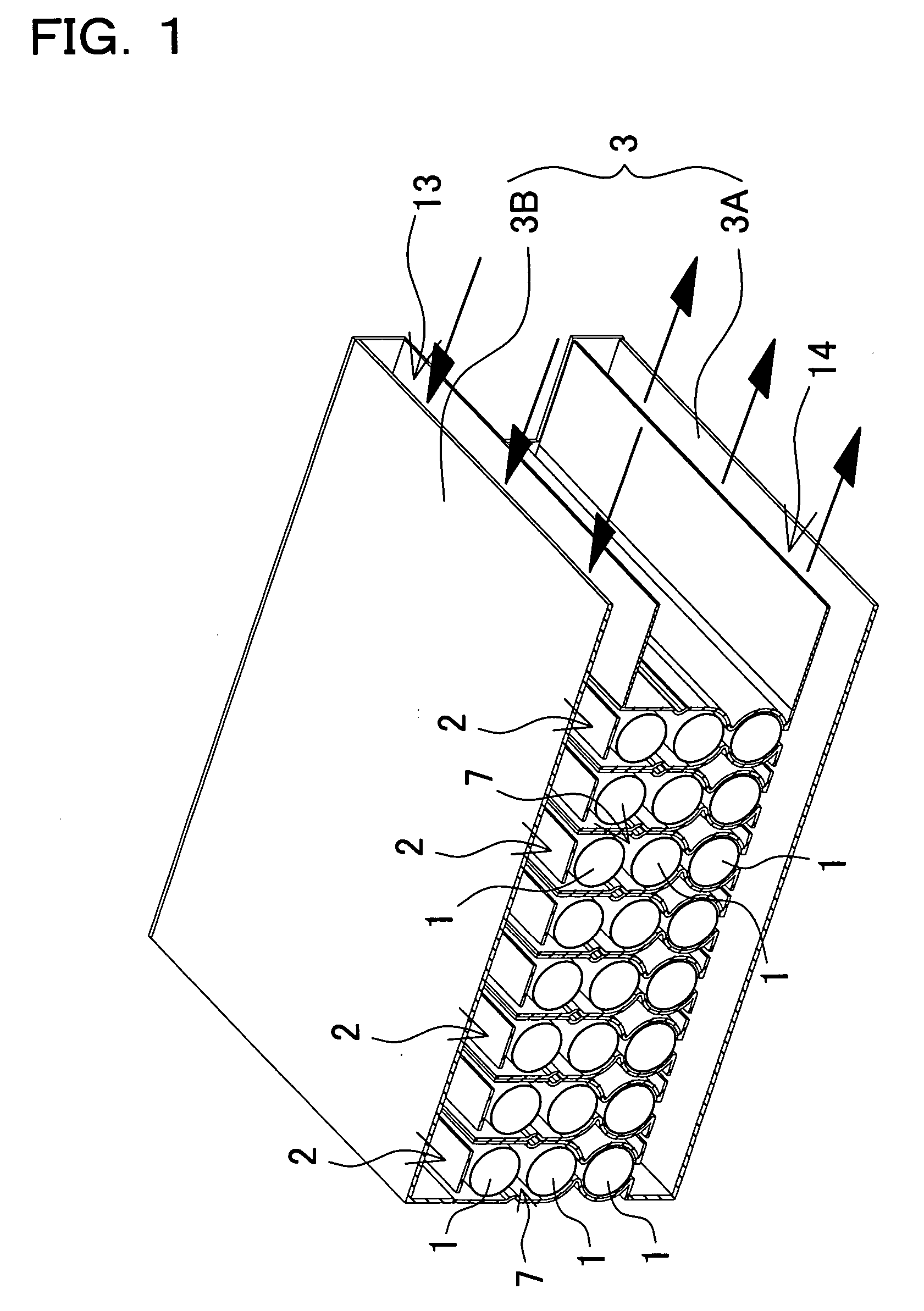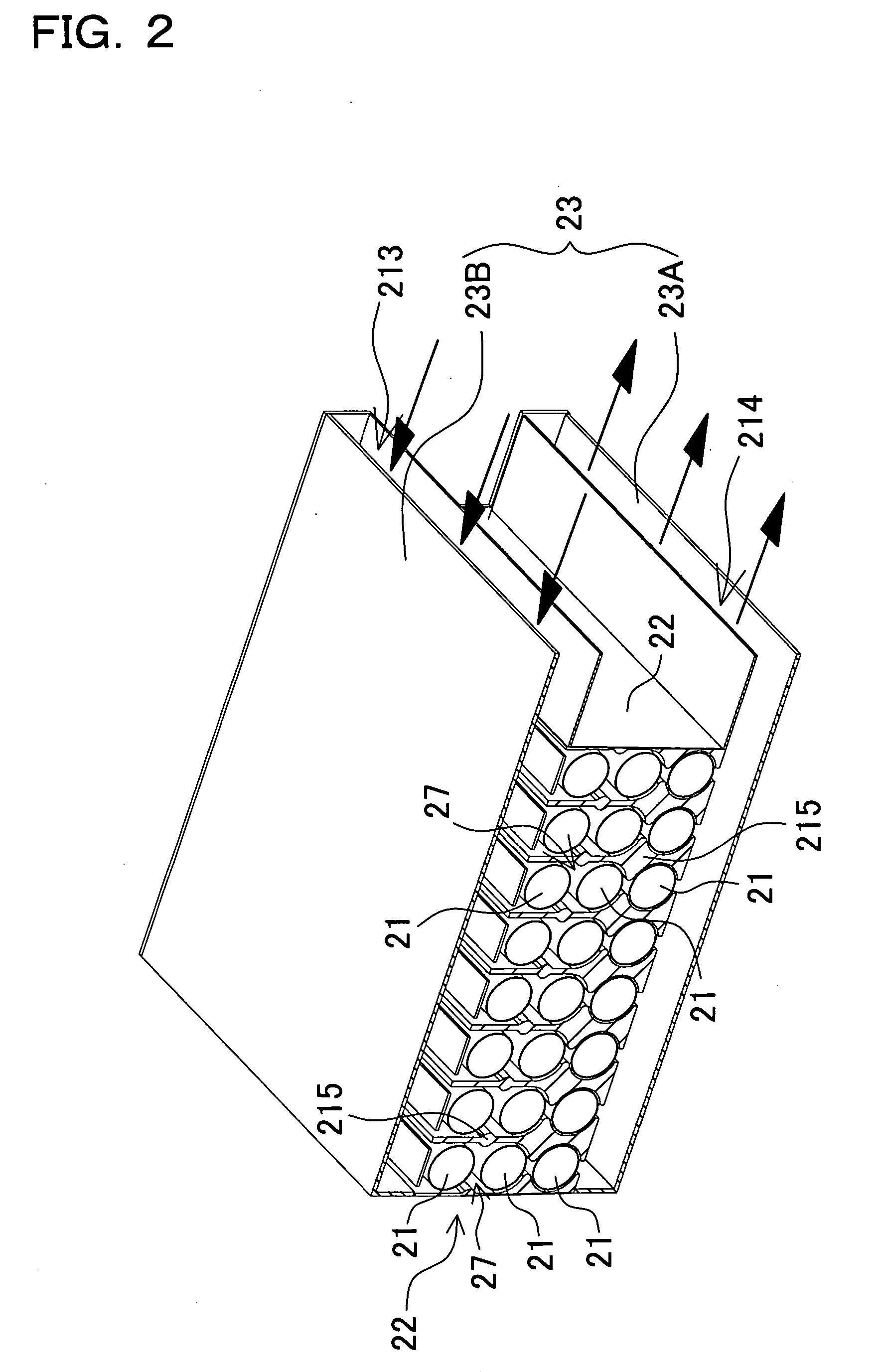Battery array
a battery array and array technology, applied in the field of batteries arrays, can solve the problems of easy over- or over-charge, reduced capacity that can be completely discharged, and degraded batteries can be fully charged, so as to achieve uniform cooling, efficient cooling, and reduced temperature differentials in the plurality of battery modules housed in the holder case
- Summary
- Abstract
- Description
- Claims
- Application Information
AI Technical Summary
Benefits of technology
Problems solved by technology
Method used
Image
Examples
Embodiment Construction
[0032] The battery array shown in FIG. 1 houses a plurality of holder cases 2 connected in a straight-line arrangement inside an outer case 3. Each holder case 2 houses a plurality of battery modules 1, and a battery module 1 is a series connection of a plurality of individual battery cells joined in a straight-line fashion. Each of the plurality of battery modules 1 housed in each holder case 2 are connected in series. However, holder case battery modules may also be connected in series and parallel.
[0033] The battery array of the figure is provided with an inlet air duct 13 between the outer case 3 and the holder cases 2 to supply cooling air to the holder cases 2. The battery array is also provided with an exhaust duct 14 to exhaust cooling air from inside the holder cases 2. In this battery array, cooling air flows from the inlet air duct 13, inside the holder cases 2, to the exhaust duct 14, and when the cooling air passes through the interior of the holder cases 2, it cools t...
PUM
| Property | Measurement | Unit |
|---|---|---|
| output voltages | aaaaa | aaaaa |
| height | aaaaa | aaaaa |
| electric power | aaaaa | aaaaa |
Abstract
Description
Claims
Application Information
 Login to View More
Login to View More - R&D
- Intellectual Property
- Life Sciences
- Materials
- Tech Scout
- Unparalleled Data Quality
- Higher Quality Content
- 60% Fewer Hallucinations
Browse by: Latest US Patents, China's latest patents, Technical Efficacy Thesaurus, Application Domain, Technology Topic, Popular Technical Reports.
© 2025 PatSnap. All rights reserved.Legal|Privacy policy|Modern Slavery Act Transparency Statement|Sitemap|About US| Contact US: help@patsnap.com



